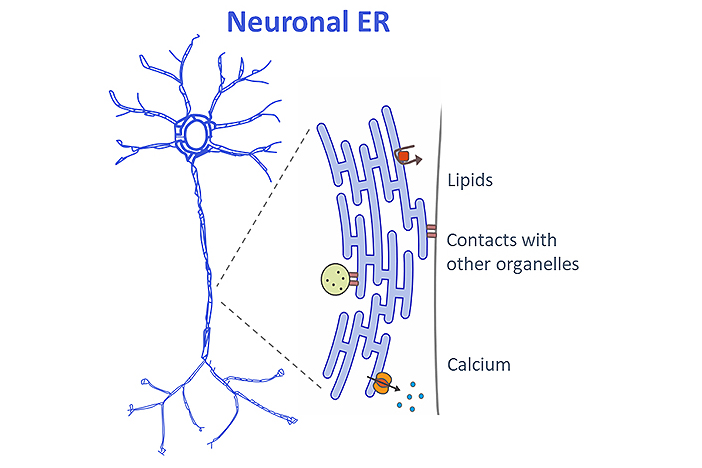Kuijpers will use the 1.5-million-euro grant to study a large intracellular organelle called the Endoplasmic Reticulum (ER) in nerve cells.
The inside of a cell is organized into separate compartments, or organelles, that fulfil specific functions. The nucleus for instance, houses our genetic material while mitochondria create the energy needed to fuel cellular processes. The endoplasmic reticulum (or ER) is the largest organelle inside our cells and serves many roles, from the production and transport of proteins and lipids, to the storage of calcium. While malfunctioning of the ER is linked to the development of neurodegenerative disorders we know very little about how this huge organelle supports the unique function of the cells in our nervous system.
Nerve cells are responsible for our ability to remember and to coordinate all of the necessary functions of life. Nerve cells have some very unique features, for instance, they are very large, as their main task is to transmit impulses over extremely long distances. This important task of signal transmission is also reflected in the nerve cell’s asymmetry, with processes called dendrites that receive impulses from other nerve cells and one thin, very long process called the axon that transmits the signal to other cells. To grow and maintain these large, functionally diverse structures, nerve cells depend on proper sorting and transport of proteins, lipids and a correct distribution of other cellular elements, processes in which the ER could play a vital role. In addition, the transmission of nerve impulses heavily relies on changes in calcium concentrations, pointing to an additional role the ER could have in these cells.
The team will use innovative imaging techniques that allow the visualization of ER resident proteins, ER dynamics and ER processes such as calcium storage inside the nerve cell. The awarded project synERgy will help scientists to establish the role of the ER in nerve cells to ultimately understand how defects in ER function contribute to neurodegeneration.
About ERC Grants: The funding program of the European Research Council (ERC) is one of the most prestigious in Europe. Starting Grants support excellent researchers beginning with their own independent research team or programme and are endowed with up to 1.5 million euros over five years


